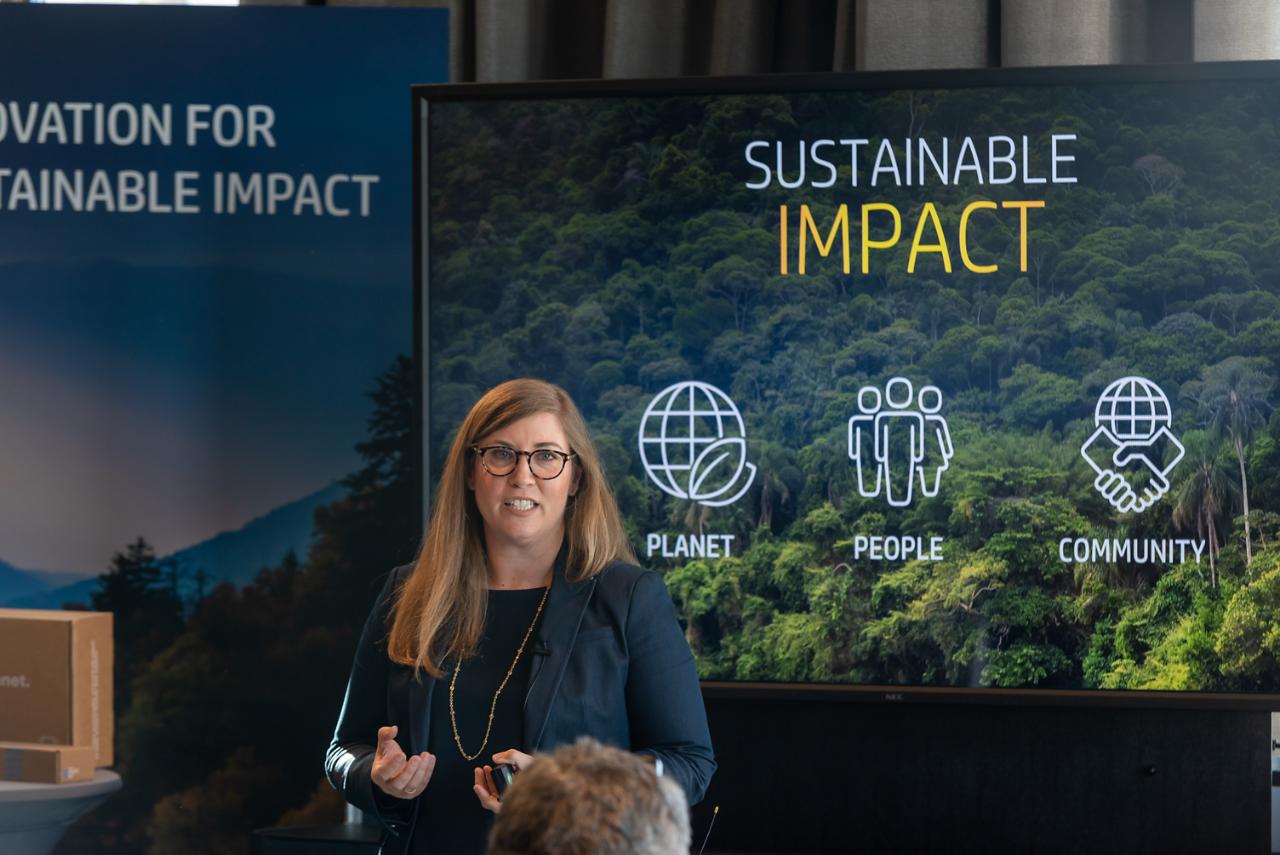[vc_row][vc_column][vc_column_text]When you buy an HP printer cartridge, it may contain plastic that’s been recycled up to seven times, which is no small feat considering that every new cartridge has to meet specific engineering requirements and strict performance standards.
This circular-economy success story is possible, at least in part, because of the company’s long-term commitment to sustainability. Global citizenship is one of the Palo Alto-headquartered tech company’s eight corporate objectives, and its sustainable impact strategy touches on everything from supply chain to renewable energy to workplace diversity and inclusion. And according to Ellen Jackowski, the company’s Global Head, Sustainability Strategy & Innovation, it’s a strategy that also makes business sense. [/vc_column_text][vc_single_image image=”16067″ img_size=”full” onclick=”link_image”][/vc_column][/vc_row][vc_row][vc_column][vc_column_text]“Our customers at the enterprise level submit RFPs to us … and they have a lot of questions about our sustainability actions and commitments. So we recognize the increasing importance of this to our customers,” says Jackowski. “This is part of how we intend to be successful financially, long term, and it does have direct business impact.” Additionally, she notes that HP’s sustainability programs have also been a frequent topic in investor briefings and even plays a role in the company’s recruiting successes.
“Where we can make the biggest impact [on HP’s ecological footprint] is in our products and solutions and making them more energy efficient,” says Jackowski. “[Making our products more use-efficient] is one way we can do it. And then the other side of that footprint, almost the other half, is our supply chain.” The challenge ahead, she notes, is to “rethink our entire materials strategy” and “think about how to reinvent our entire supply chain to move away from virgin materials to use more recycled content.”[/vc_column_text][vc_media_grid style=”pagination” items_per_page=”2″ element_width=”6″ grid_id=”vc_gid:1579815571706-89d73612-2b59-3″ include=”16069,16068″][/vc_column][/vc_row][vc_row][vc_column][vc_column_text]The company is off to a good start. In 2019, HP set an industry-leading goal to use 30% recycled plastic by 2025—they’re currently at 7%, according to Jackowski—introduced the world’s first notebook made in part with ocean-bound plastic, and released a home printer, the Tango Terra, that is both net-carbon neutral through its entire life cycle and sold without plastic packaging.
And those printer cartridges? Today, more than 80% of the company’s ink cartridges and 100% of its LaserJet toner cartridges are made with materials sourced through the circular-economy, including recycled cartridges, garment hangers and recycled plastic bottles. Thanks to these efforts, the company says that it has upcycled over 500,000 pounds of ocean-bound plastic for its Original HP ink cartridges alone. (The complicated recycling procedure is not as simple as melting and reusing the plastics—post-consumer cartridge materials that are initially extracted at the company’s La Vergne, TN, recycling center, for example, have to be sent to a specialized compounding facility near Montreal, QC, to undergo a secondary technical process.) And although the process is complex and logistically involved, the environmental benefits are clear; HP’s models have shown that the recycled plastic has a 30% smaller carbon footprint compared to using virgin plastics. [/vc_column_text][/vc_column][/vc_row]













